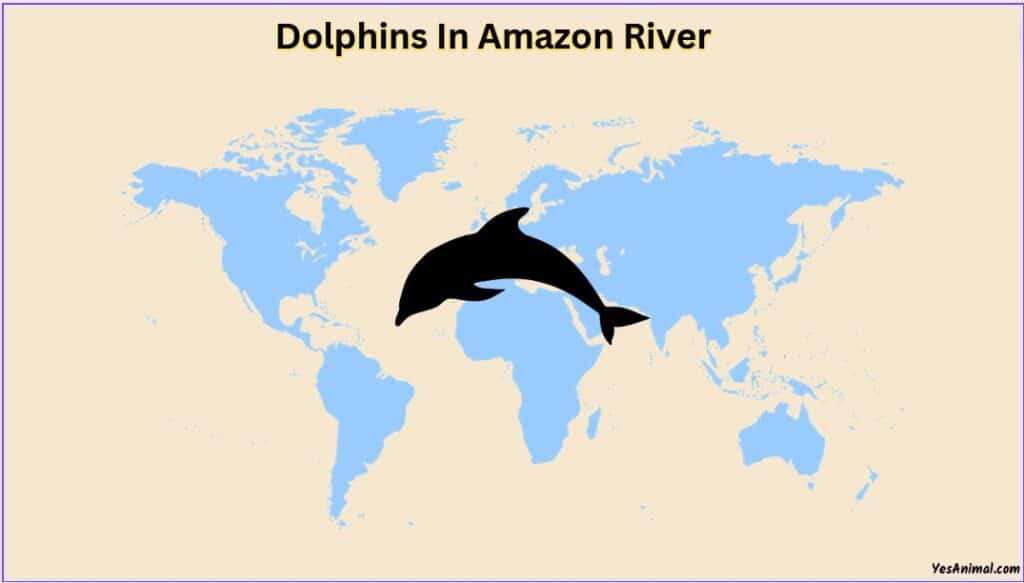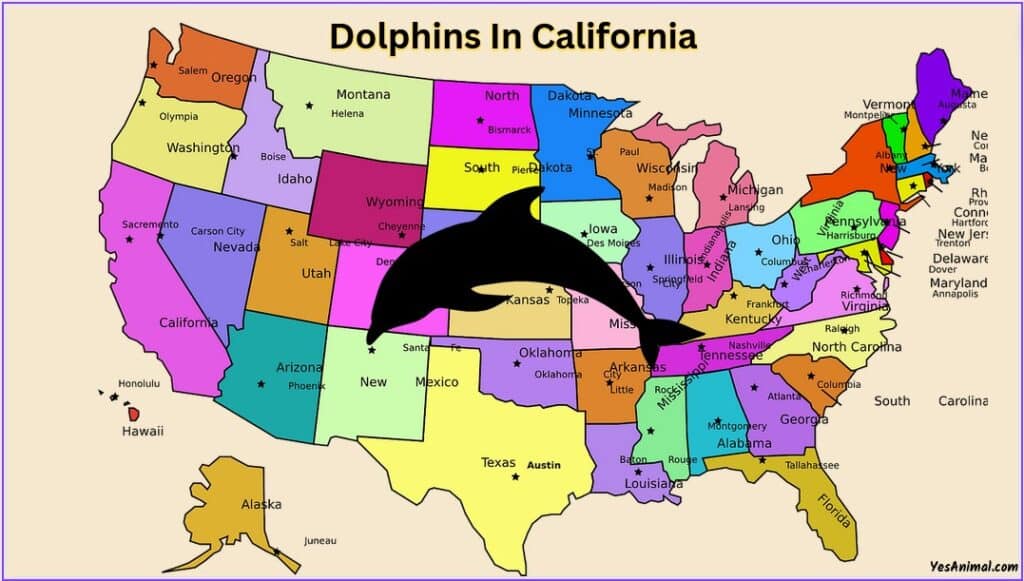Last Updated on September 14, 2023 by Amin Tawar
Are there Dolphins in Amazon River?

Amazon river dolphins are present in South America’s six countries: Brazil, Bolivia, Colombia, Peru, Ecuador, and Venezuela. In an area covering over 7,000,000 sq km. The boundaries are established by waterfalls, such as the Tapajós and Xingu rivers in Brazil, and by shallow waters. A series of waterfalls in the Madeira River have separated one population of Amazon river dolphins, identified as the subspecies in the southern region of the basin in Bolivia.
They are also distributed in the Orinoco River, in Venezuela. The distribution of dolphins depends on the time of year in the surrounding areas. During dry seasons they are seen in river beds and in rainy seasons they move to flooded areas.
How many Amazon River dolphins are left?
Studies to calculate the Amazon River dolphin population are hard to explore because of the difference in the process used. This is because they are spread out in six countries, that cover an area of about 7,000,000 sq km.
Through much research, it was found that Amazon river dolphins are seen in higher-density areas on the riverbanks. Which was concluded as 18 animals per sq km, while on the banks it was from 1.8 to 5.8 animals per sq km.
What is special about the Amazon River dolphin?
Amazon river dolphins are known to be pink in color, unlike the other river dolphins and ocean dolphins in the world. Their body color changes with age.
In newborns and younger ones, there is a grey tint and during adolescence, it transforms to lighter grey. When they become adults, they turn pink, which is a result of repeated bruising of the skin texture.
Males are pinker when compared to females due to more regular trauma from intra-species attacks. The color of adults differs between mottled and solid pink and in a few adults the dorsal surface is even more darker. The color difference also relies on water transparency, temperature, and geographical location.
What Is The Amazon River Dolphin’s Real Name?

The Amazon River dolphin is also known as the bufeo, boto, or pink river dolphin. Boto is a Portuguese term used to call different kinds of river dolphins and dolphins that are native to the Amazon River tributaries. Bufeo on the other hand is a Spanish term for dolphins. The Amazon River dolphins are also called pink river dolphins as they are pink in color.
Also, Check Our Guide On Dolphins In Myrtle Beach
How Big Is The Amazon River Dolphin?
The Amazon River dolphins are the largest. Adult male dolphins can reach a length of 8.4 feet and a weight of 408 lbs. While adult female dolphins can reach up to 7.1 feet in length and 330 lbs in weight.
It has very clear sexual dimorphism, with females weighing and measuring between 16% to 55% less than males, which makes it special in river dolphins, where generally females are bigger than males. The body color differs with age.
Newborns and young ones have a grey tint, which in youth changes into soft grey, and grown-ups turn pink. Males are more pinker than females because of more frequent concussions from intra-species attacks. The color difference also depends on the water transparency, temperature, and geographical location. The surface of the body is robust but flexible.
What Does Amazon River Dolphin Eat & What Eats Amazon River Dolphin?
Amazon river dolphin’s diet is very diverse among the toothed whales. It consists of over 53 different kinds of fish. The prey size is from 5 to 80 centimeters, with the average size being 20 centimeters. The most frequently gulped fish is the Sciaenidae, Cichlidae, Characidae, and Serrasalmidae.
Its dentition lets it chew on the shells of river turtles and freshwater crabs. Their diet can be extremely diverse in the wet season as prey availability is found in flooded regions above riverbeds, making it hard to catch. Also, the diet becomes more choosy in the dry season as the prey density is bigger. They feed during the day and night, around 5.5% of their body weight each day.
Amazon river dolphins have very less natural predators, because of their size. They are mostly eaten by jaguars, caimans, and anacondas. These animals rarely hunt river dolphins.
Are Amazon River Dolphins Dangerous?
According to experts, Amazon river dolphins rarely attack humans until felt threatened. They are non-aggressive creatures and it is the opposite, they are very charismatic and curious animals.
As tourism like “disordered nature tourism”, and “Swimming with river dolphins” had originated in South America, practices of giving food have led to clashes. This is a bad example that has been spreading throughout the Amazon, leading to many aggressive cases.
The recent Amazon river dolphin attack took place in Santa Rosa de Yacuma, Bolivia. When a river dolphin bit the woman’s foot, peeling off the flesh and exposing her bones. Officials believe that the animal was threatened by the group of tourists that has been swimming along with this woman.
Is The Amazon River Dolphin Endangered?
Amazon river dolphins are on the IUCN’s Red List of endangered species. In Bolivia, dolphins are a national natural heritage and are considered a symbolic species.
The International Whaling Commission voiced its consideration for captured river dolphins for usage as bait in the Amazon, which is a problem on a large scale.
The species are also listed in Appendix II of the Convention on International Trade in Endangered Species Fauna and Flora, and Convention on the Conservation of Migratory Species of Wild Animals.
Increasing pollution and demolition of the Amazon rainforest count to the vulnerability of these species. The biggest threats are deforestation, human tourism, and human activities contributing to modifying their environment. Also, keeping these animals in captivity is very hard, because of the intra-species aggression and less longevity.
Captive breeding is not deemed a conservation choice option for this species. In addition to these threats, river dolphins face many threats like accidental catches, habitat loss, population fragmentation, genetic diversity by contamination of pollutants, and conflicts with fishermen. River dolphin populations are declining in the world, and it is not different for the ones in Amazon.
Conclusion
And that was everything you need to know about the Dolphins in the Amazon River. I hope this article answered all your queries.
Our Source For This Guide.
